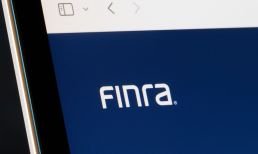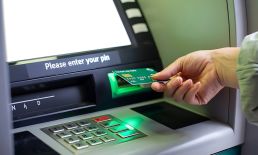Samsung’s recently announced that it was launching its own beacon approach called Proximity. One has to assume that the rationale is similar to Apple’s: convert retailers into beacon users, and jumpstart the market for additional hardware sales. But there’s one big difference: an app is no longer required for a beacon to trigger a message onto the Samsung phone.
Many in the industry view this as a huge move by Samsung since it removes a big barrier that has gotten in the way of getting beacons to work. Rather than needing an app, Samsung’s operating system can enable beacon technology on any phone running that operating system.
“Trying to hunt down a media owner that is willing to implement a beacon that has enough scale to reach enough consumers and then bring in the brand and negotiate. This has led to a very slow rollout of the types if experiences I’d like to see with beacons,” Scott Varland, creative director at the IPG Media Lab said in a Media Post article.
Contrast that to Apple’s iBeacon which has been around for about a year.
Analysts were reported in a recent Bloomberg article as saying that less than 1 percent of the 3.6 million retail stores in the U.S. use iBeacons because, among other reasons, iBeacon still requires shoppers to download apps that have the tracking technology incorporated. They also suggest that most consumers don’t think to look at shopping aids while in the store. And while the technology may help target consumers, marketing what a consumer wants from a retailer is still an age-old question even the app technology can’t seem to solve. Apple has retailers like Macy testing its iBeacon for product recommendations and Shopkick discounts, or Lord & Taylor through its coupon app SnipSnap, but it remains in test mode in most markets. Converting retailers to the system is the next major step – although iBeacon has broken into the MLB with beacons in 28 ballparks to help push merchandise and seat upgrade coupons.
Advertisement: Scroll to Continue
“Those apps are gimmicky.”Adam Silverman, an analyst at Forrester Research told Bloomberg “The retailers haven’t yet deciphered what customers want.”
And that’s the key
The problem with iBeacon doesn’t appear to be convincing major companies or getting parnterships in place Bloomberg also reported that iBeacon is making progress with major players like Google, which recently built iBeacon into Android; GE Lighting also formed a partnership to help track shoppers using iBeacon. The big hurdle is convincing the shoppers. Ultimately for Apple, that’s what matters most.
“We have half of Fortune 500 developing with us,” Steve Cheney, a senior vice president at startup Estimote told Bloomberg. Estimote designs hardware and software to work with iBeacon.
The prize of course, is data, data that can be used to send push notifications that influence consumer behavior, change how and when they interact with retailers and give retailers a data-driven look into what drives customers to that particular store. It’s technology is also being used as a novelty to boost food and drink sales in places like the San Francisco 49ers stadium where fans can now tap into the technology to locate the closest restroom or perhaps hot dog or beer stand with the shortest line.
“As mobile internet usage continues to rise and mobile phones continue to captivate us no matter where we are, retailers are getting crafty about how to serve their customers a better experience and push them through a sales funnel, all without forcing them to take their eyes off their phones,” author H.O. Maycotte wrote in Forbes. “Meet beacon technology, the middleman between consumers and companies, the highway via which data can be ethically exchanged for services, goods or just improved experience.”
“Besides iBeacon, there are multiple competitors including Estimote, Bluecats, Bluesense and Gelo that have launched their own beacons that work with both iOS and Android devices, but still iBeacons dominates the space. Who uses beacons already? Quite a few, in fact, from everyone like parents who want to track children at a park to everything like to airports and retailers.
Just a few, as listed by Smart Data Collective, include: “Virgin Atlantic runs an iBeacon trial at London’s Heathrow Airport; iBeacons transform attendee experiences at SXSW 2014; Hillshire Brands uses beacon tech to sell more craft sausages; Starwood Hotels use beacons to replace hotel room keys in pilot program; Dating app Mingleton uses iBeacon to connect singles in the same vicinity; American Eagle and Aerie stores to auto-populate offers and rewards; Japan Airlines uses beacons in Tokyo airport to improve business processes; American Airlines launches iBeacons in Dallas Airport; Nivea uses iBeacons to help parents keep track of their children at the beach; Walgreens rolls out iBeacons in select Duane Reade stores and Walmart launches iBeacon trial by using beacon-equipped GE lightbulbs in stores.”
Beacons have been given a bad rep for being the next big brother, but that’s not how they work. They have been called “consumer-friendly” for the fact that they don’t collect data, but instead sends retailers information on the consumer’s movements and purchase history based on consumer habits. Still, there’s questions about how to secure messages being sent from a beacon to Samsung phones. For instance, as the Media Post article points out, what would prevent anyone with a beacon in their pocket to trigger messages from within a store? That may not be an issue, but the article suggests the release details didn’t include anything to confirm the security of the product.
“It seems like anyone with a beacon could send a message. Like all these things, it’s just a matter about getting your hands on it to see how it actually works,” Varland said in the Media Post article. How to manage multiple beacons at once could be another issue. “If there are five beacons competing for that user’s attention, how is that going to be mediated? “Those are big questions. Is Samsung going to have that role?”
Also, if Samsung and Apple continue to compete in this space, instead of collaborate, there’s also a chance it could place greater burden on the retailer who wants to adopt the beacon technology. Samsung’s beacon is currently for Samsung phones and iBeacon is for Apple’s, therefore retailers would theoretically need two set of beacons installed. Samsung’s beacons are equipped to work with Android phones, but it hasn’t been explained what happens if the Android phone isn’t from Samsung. Solving these questions could be what creates the difference in who has success with beacons.
Regardless of the potential kinks that have to be worked out, Forbes said that “beacons are the gift we’re all getting” this holiday season, and eventually “it’s one we sooner or later be thankful for.” It provides a mutually-beneficial relationship between the customer and the retailer, but it doesn’t solve all the problems retailers see — particularly around the holiday season.
“Beacons are providing for retailers and their customers the ideal data relationship: I give you something in exchange for something else (in this case, data for improved service),” H.O. Maycotte wrote for Forbes. “And, you won’t even have to necessarily download tons of apps, either. Many retailers are currently using Shopkick to help launch their beacon programs, including Macy’s this holiday season. The app is quickly becoming a one stop shop for beacon-enabled push notifications, just be sure to read through the terms of service so you know what you are opting in to.”
“All of this said, beacons can’t eliminate holiday traffic nor help you wake up at 4 a.m. on Black Friday to get the best deals. But, beacon technology can let you know if an item you want is still in stock (and at what price point), which stores near you have short lines or really cool deals you wouldn’t have otherwise known about, and overall save you time and money. And all of this in an ethical, data rights-friendly way.”



